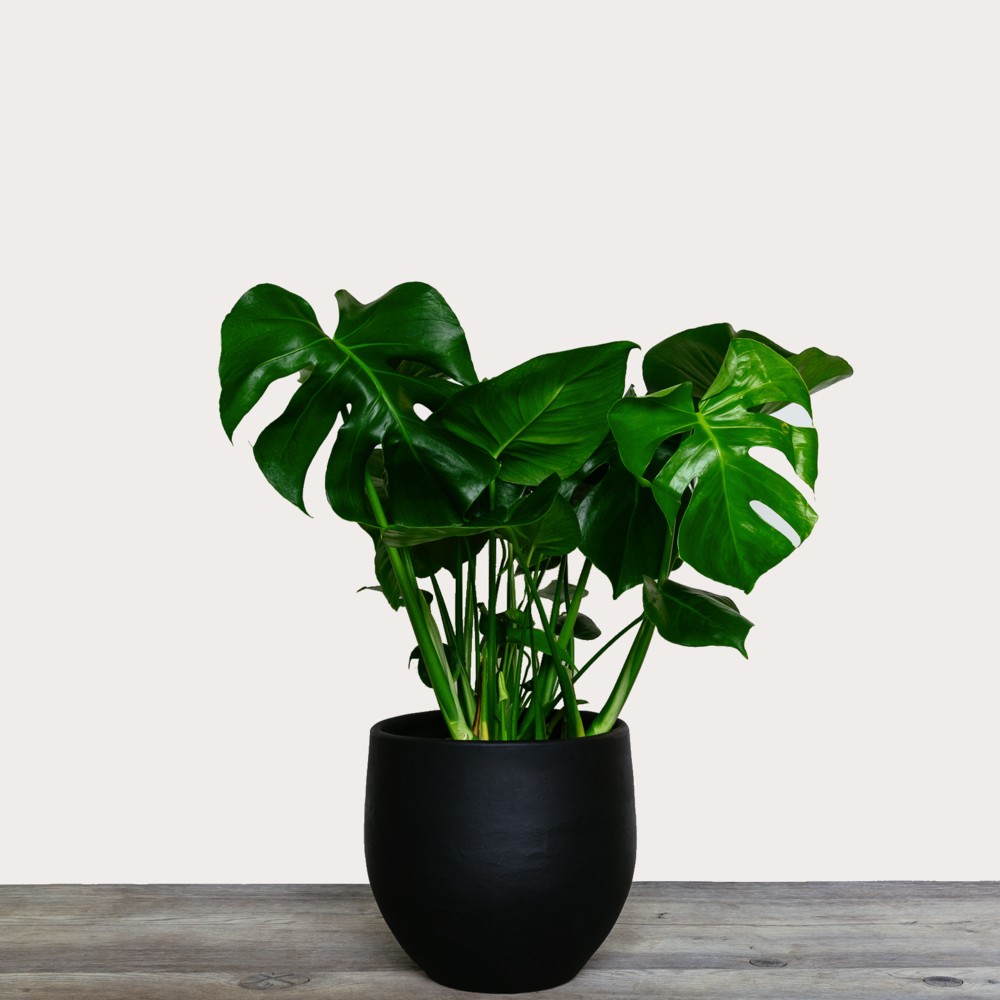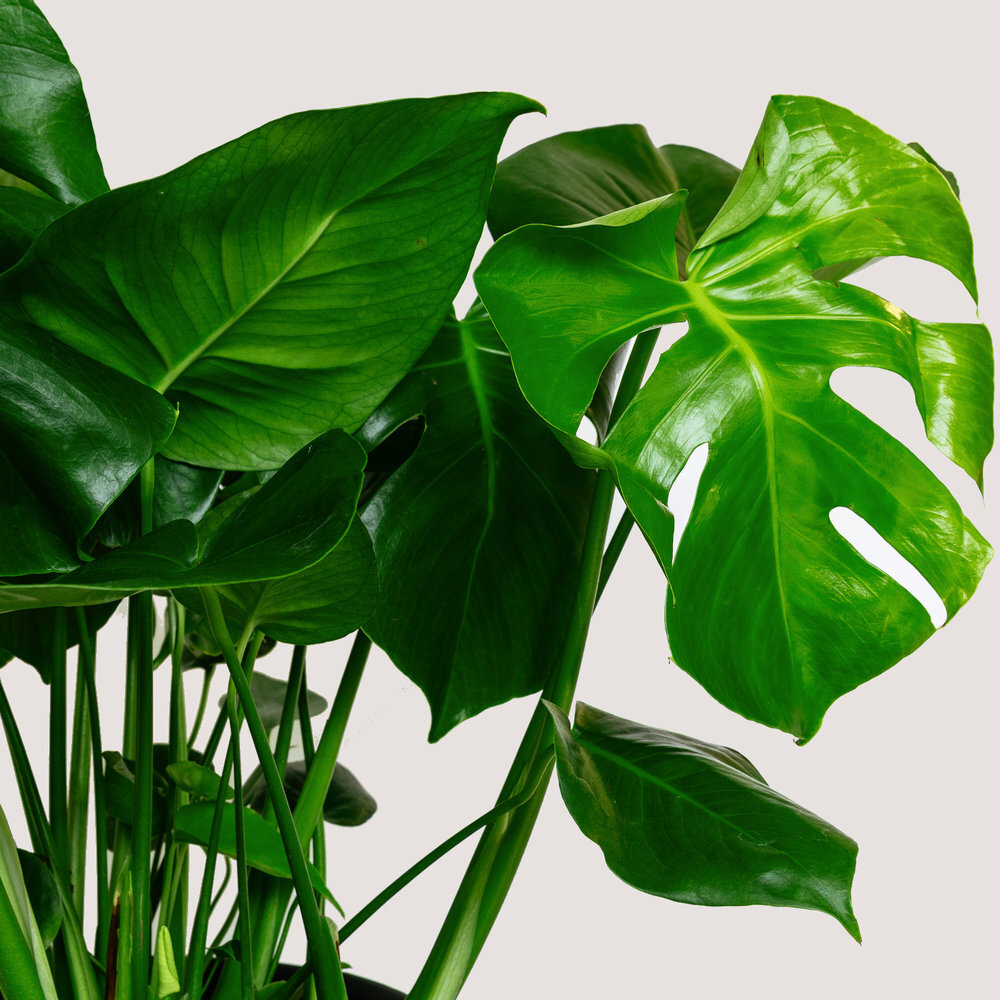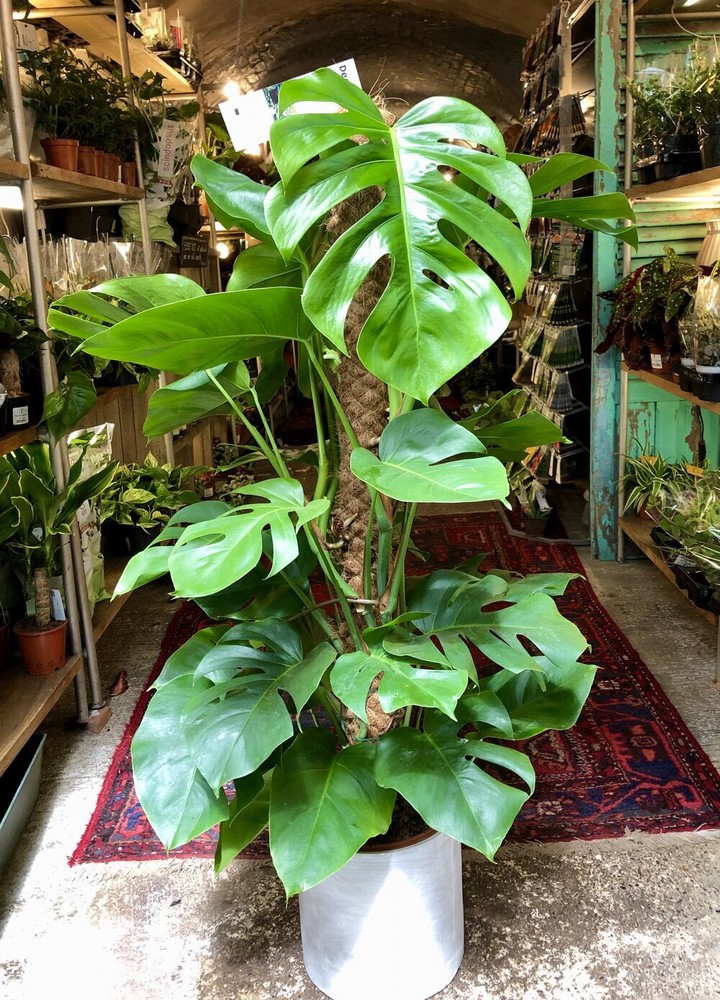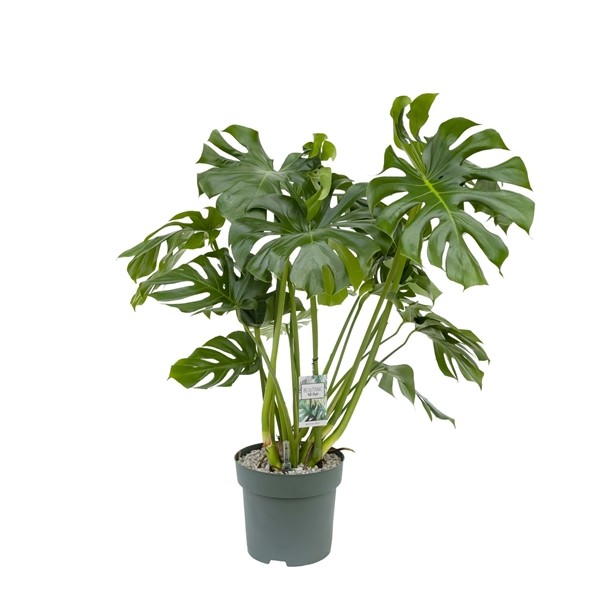Description
In the jungles of Central and South America Monstera Deliciosa is a true monster of the forest canopy. If not restrained in a pot, this Tyrannosaurus Rex of a plant can climb high into the tree-tops. With tell-tale holes in the massive leaves, the Cheese Plant is instantly recognisable by most people.
Cheese Plants often live a long-life and benefit from regular repotting as they grow. Though they tolerate a certain amount of neglect, owners who give their Monstera Deliciosa regular TLC will be rewarded with a lusciously green houseplant having architectural stature!
Water / Feed
: A weekly water is the rule of thumb. The top layer of compost should be allowed to dry-out between watering sessions. A monthly feed with a good, all-round houseplant fertiliser is recommended.
Pet / Child
: Not recommended for households with small children or pets. For self-protection in the wild, the leaves of Monstera Deliciosa are poisonous.
Temperature / Humidity
: Cheese Plants prefer to live in a home with the room temperature set a little higher than average. Aim for min/max temperatures of 12°C (54°F) to 26°C (79°F). Regular misting and dust removal with a water-soaked sponge should be part of your Cheese Plant care routine.
Soil Type
: Use a good quality potting compost with extra drainage material when you repot Monstera. Older plants may benefit from potting compost top-ups or replacement as they mature.
Light / Position
: Position a Cheese Plant in a bright spot but avoid any risk of direct exposure to incoming sunlight.
Health Benefits
: With a profusion of large leaves Cheese Plants are highly effective at turning Carbon Dioxide (CO2) into Oxygen. This large houseplant also believed to help improve indoor air quality.
Growth / Spread
: In the right conditions, Monstera Deliciosa is a prolific climber that will grow extremely large. The plant is likely to need cutting back after 3 or 4 years.
Geographic Origins
:This species can be found growing wild in the tropical forests of Central and Southern America.




